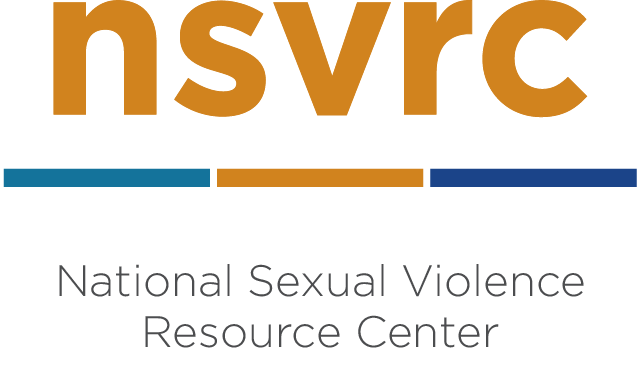SART protocols/guidelines are agreements between agencies about the provision of sexual assault services and the roles and responsibilities of core responders. Ultimately, protocols provide a way for team members to institutionalize interagency expectations in order to maintain high quality, consistent responses over the long-term.
SART protocol development requires that each agency on the team customize their individual agency responses into an ideal multidisciplinary, coordinated response. The Minnesota Model Protocol Project uses a responsibility matrix to show distinct and interrelated responsibilities among team members as a catalyst to develop a SART protocol. Blank rows at the end of each section provide spaces for SARTs to add other tasks as SARTs evolve over time.
When creating guidelines or protocols, teams should balance the need for structure and certainty with a system that allows for flexibility based on victims’ specific needs and case variables. For example, once policies are written, there could be legal or procedural repercussions when procedures are not followed, no matter how compelling the reason. To offset potential problems, some teams refrain from using the term protocol and write their policies as guidelines to minimize legal repercussions when policies are not followed.
Once team policies are established, many SARTs formalize the process through memoranda of understanding or agreement (MOU/MOA). MOUs/MOAs are important in the structuring of position/agency relationships.
Sample MOUs/MOAs are available online through the SAFE TA project’s library (see Program Administration: Memorandum of Understanding samples).
To submit a protocol or MOU from your SART, please contact us.
Protocols from around the country, including statewide and local materials, are included below:
Statewide Protocols
Colorado Coalition Against Sexual Assault - Statewide Sexual Assault Response Team Manual (57 pages, PDF) This manual by the Colorado Coalition Against Sexual Assault discusses building a SART. Section 8 covers protocol creation, including advocacy, law enforcement, medical, and prosecution responses.
Guidelines for Community Response to Sexual Assault in Alaska (9 pages, PDF) These guidelines from Alaska help communities develop a SART by providing information on team member roles, processes, suggested training, and protocol.
New Hampshire Sexual Assault: An Acute Care Protocol for Medical/Forensic Evaluation (113 pages, PDF) New Hampshire’s protocol focuses on medical/forensic evaluation as well as the state’s laws regarding sexual assault, reporting, and options for patients.
North Dakota Sexual Assault Evidence Collection Protocol (103 pages, PDF) The state of North Dakota’s protocol provides information about a number of different victim populations, including children, people in later life, men, people who identify as LGBT, victims with disabilities, and others. It also includes recommendations for law enforcement as well as medical personnel.
Ohio Protocol for Sexual Assault Forensic and Medical Examination (48 pages, PDF) The Ohio protocol covers adult and older adolescent sexual assault forensic and medical examination.
Oregon SATF Sexual Assault Response Team (SART) Handbook (82 pages, PDF) This handbook discusses advocacy, law enforcement, medical, prosecutor, offender management, and forensic lab responses to sexual assault. This protocol also covers outreach and prevention.
Sexual Assault Response Teams (SART): A Model Protocol for Virginia (118 pages, PDF) This protocol from Virginia provides guidance on creating a SART response, including model SART response charts. Relevant state statutes are also included.
Wisconsin Adult Sexual Assault Response Team Protocol (75 pages, PDF) This protocol was developed in 2011 for Wisconsin’s Adult SART and includes advocates, law enforcement, prosecution, and SANEs. This protocol also covers PREA, cultural competency, and best practices.
City Protocols
Denver Sexual Assault Response Protocol (163 pages, PDF) Denver, Colorado’s protocol includes responses for law enforcement, medical personnel, community victim services, college campuses, prosecution, and sex offender management.
County/Region Protocols
Cambria County Sexual Assault Protocol (44 pages, PDF) This protocol from Cambria County, Pennsylvania covers the roles of law enforcement officers, victim advocates, SANEs, and prosecutors. It also includes a protocol checklist and discusses each member’s role with regard to anonymous reporting.
Miami-Dade Corrections and Rehabilitation Department Sexual Assault Response Team Protocol (30 pages, Microsoft Word) This protocol from Miami-Dade County, Florida lays out the goals and structure of the SART as well as a timeline/process.
Red River Sexual Assault Response Team Protocol for Responding to Sexual Assault (70 pages, PDF) This protocol was developed by the Red River Sexual Assault Response Team in Cass County, North Dakota and Clay County, Minnesota. It covers processes for health care providers, SANEs, victim advocates, law enforcement, and prosecution.
Sexual Assault Response Protocol, Region of Waterloo (70 pages, PDF) This protocol toolkit the Waterloo region in Ontario, Canada includes forms, information about sexual consent, a service provider self-assessment checklist, a flow chart of the criminal justice process, and more.
Tribal Protocols
Saginaw Chippewa Indian Tribe of Michigan Sexual Assault Response Team Policy & Protocol (26 pages, PDF) This protocol provides goals and a mission statement for a tribal SART in Michigan. The protocol includes a SART structure and processes for law enforcement officers, SANEs, and on-call advocates.
Additional Protocols
Best Practices in the Criminal Justice Response to Domestic Violence and Sexual Assault: Guidance for CCR/SART Response Protocols (25 pages, PDF) This protocol was developed by the North Carolina Coalition Against Sexual Assault and the North Carolina Coalition Against Domestic Violence. It includes protocol best practices for sexual assault and domestic violence responses.
PREA Coordinated Response Protocol Template for Small Jails (15 pages, PDF) This sample SART protocol provides processes for jail staff members, PREA liaisons, advocates, SANEs, law enforcement investigators, and attorneys.
SAFE Protocol: Trans-Specific Annotation (4 pages, PDF) This guide from FORGE provides additional details on the trans-specific references in the National Protocol for Sexual Assault Medical Forensic Examinations.
